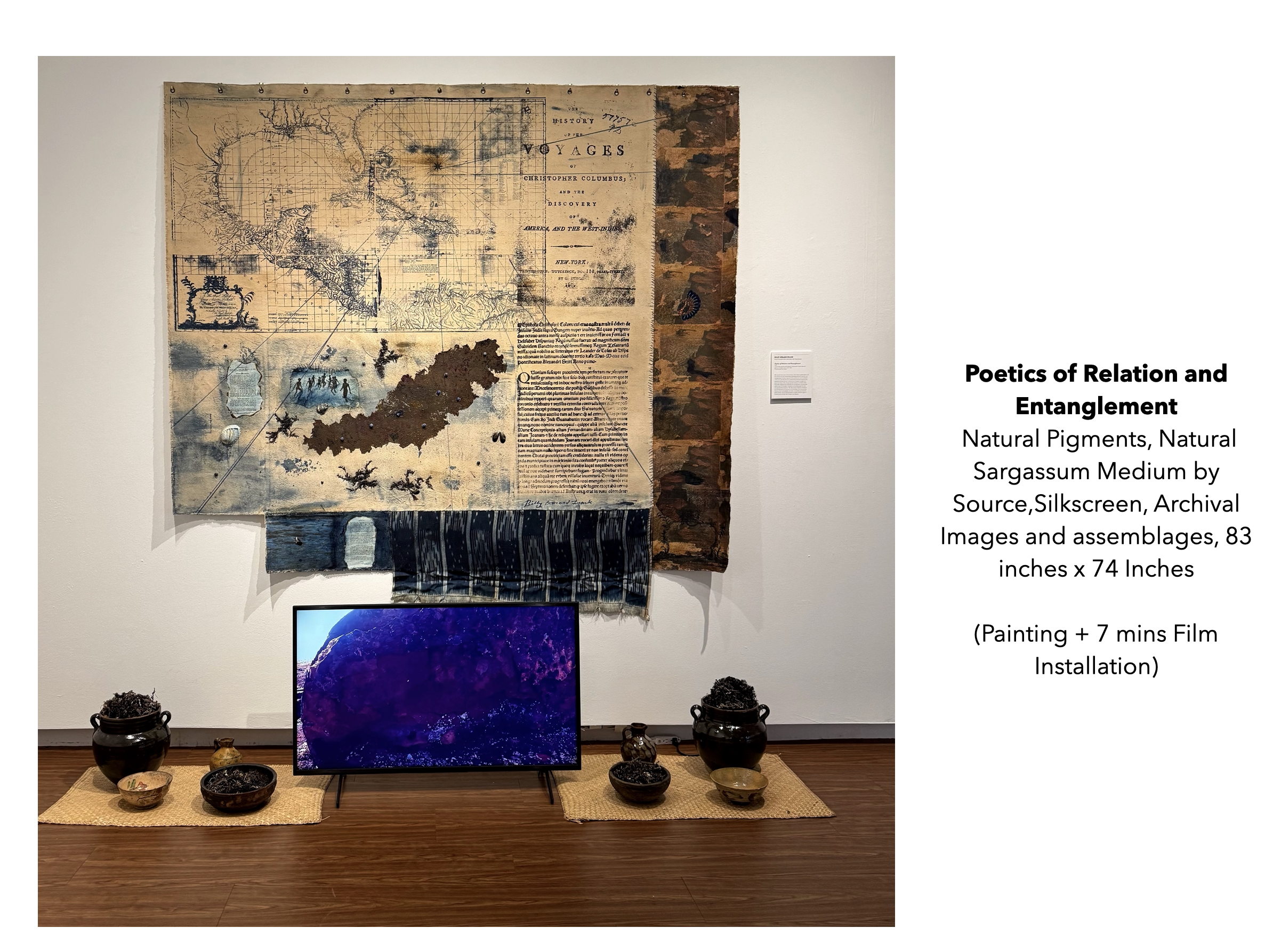“In the World through which I travel, I am endlessly creating myself”
—Frantz Fanon
Poetics of Relation and Entanglement (2024) presents a mixed media painting, urns, a looping 7-minute video, and an Olfactory Accord, exploring the symbolic and poetic connections of sargassum across the Atlantic, Africa, Europe, and the Americas. The central focus of the piece is a large, weathered, and stained map of the Caribbean, with a close-up of the Grenadines, suggesting the idea of degradation of both physical and historical landscapes. Yet the map, including painting with pigments derived from sargassum made by Source lab in Florida, also expresses the practices of conservation, re-interpretation and transformation of heteronomous heritage. The printed text references the "History of the Voyages of Christopher Columbus," narrating Columbus sailors' fear for entrapment when encountering dense sargassum, and therefore tying the work to the narrative of discovery and colonialism. At the bottom, fabric-like elements with patterns evoke traditional Caribbean textiles, grounding the piece in the region's cultural heritage. The video installation captures Sargassum's arrival in the small fishing village port of Carriacou in the Grenadines, recently devastated by Hurricane Beryl. The image seems to hint at a piece of a wreckage, echoing the memory of Colombus’ colonizing fleet. This decaying and isolated object suggests themes of dislocation and the passage of time. The soil that blends into the rust appears to be dead or decaying algae, like the poison of the metal mixing with the invasive species. The entanglement of the decayed industrial relic with the landscape suggests a complex layering of time and memory, where past and present coexist in a state of erosion and transformation.
The project draws on the sargassum’s role as both a natural phenomenon and a historical symbol. In his journal, Columbus described it as provoking fear and entanglement, a sentiment echoed metaphorically in Jean Rhys's Wide Sargasso Sea. Along its journey, the sargassum gathers human debris, marine life, and other materials, embodying a literal and symbolic entanglement that mirrors its historical and ecological narratives.
TEXT BY: by Vanessa Selk, and Michael D. Carrasco, associate dean for research at FSU’s College of Fine Arts.



